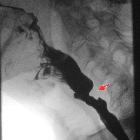Zenker-Divertikel












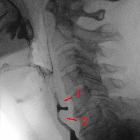
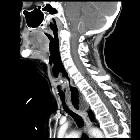




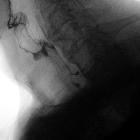
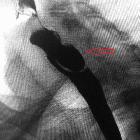




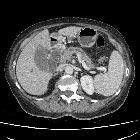
Zenker diverticulum, also known as a pharyngeal pouch, is a posterior outpouching of the hypopharynx, just proximal to the upper esophageal sphincter through a weakness in the muscle layer called the Killian dehiscence.
Epidemiology
More than 50% of the affected patients present in 60-80 years of life. It is rarely found in individuals less than 40 years of age .
Clinical presentation
The entrapment of liquid and/or food within the diverticulum may result in:
- globus sensation
- dysphagia
- halitosis
- regurgitation
- chronic cough
- infection
- aspiration pneumonia
- foreign body sensation
- weight loss
Pathology
A Zenker diverticulum is a pulsion-pseudodiverticulum and results from herniation of mucosa and submucosa through the Killian triangle (or Killian dehiscence), a focal weakness in the hypopharynx at the normal cleavage plane between the fibers of the two parts of the inferior pharyngeal constrictor muscle - the cricopharyngeus and thyropharyngeus.
This phenomenon may lead to the creation of a sac with a narrow neck that can trap liquid and food. The distended sac may compress the cervical esophagus.
Radiographic features
Fluoroscopy
Ideally, a barium swallow examination is performed, which may show:
- a diverticulum arising from the midline of the posterior wall of the distal pharynx near the pharyngoesophageal junction
- the outpouching may be transient, and some refer to the transient variety as a "pharyngeal pouch"
- the pouch is best identified during swallowing and is best seen on the lateral view, on which the diverticulum is typically noted at the C5-6 level
Since ~90% of patients with a Zenker diverticulum have a hiatal hernia and gastro-esophageal reflux, the distal esophagus should also be evaluated.
Treatment and prognosis
In addition to the clinical symptoms mentioned above, patients with a Zenker diverticulum are at increased risk for aspiration.
A Zenker diverticulum may be surgically treated with an endoscopic, surgical diverticulectomy, or diverticulopexy.
History and etymology
It is named after Friedrich Albert von Zenker (1825-1898), a German pathologist who held a position as teacher and researcher for more than 30 years at the University of Erlangen.
See also
Siehe auch:
- Postdeglutitive Aspiration
- Killian-Jamieson-Divertikel
- Killian-Dreieck
- Musculus constrictor pharyngis inferior
- Ösophagusbreischluck
- Zenker-Divertikel Grade nach Brombart
- Dysphagie
- Pulsionsdivertikel
- scheinbares zweites Lumen des oberen Ösophagus
- betontes pharyngoösophageales Segment
- Laimerpouch
- zervikale Ösophaguspouches
- gastroösophageale Refluxerkrankheit
- Zenkerdivertikel bei Kindern
- Divertikel und Pouches des Pharynx
und weiter:

 Assoziationen und Differentialdiagnosen zu Zenker-Divertikel:
Assoziationen und Differentialdiagnosen zu Zenker-Divertikel:




